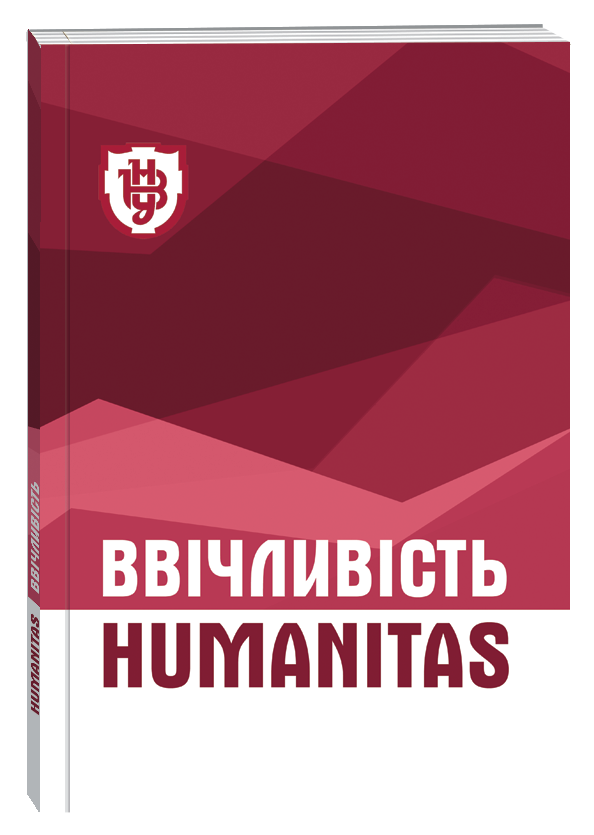SOCIAL SUPPORT FOR THE ELDERLY AND INTERGENERATIONAL SOLIDARITY IN THE CONTEXT OF DEMOGRAPHIC AGEING: WESTERN EUROPEAN EXPERIENCE
DOI:
https://doi.org/10.32782/humanitas/2025.4.25Keywords:
history of old age, institutionalization, intergenerational solidarity, historical practices of social support, demographic ageing, social institutions, intergenerational interaction, ageismAbstract
The relevance of this study is driven by the rapid increase in the proportion of older adults in the demographic structure of society and the complex challenges arising from this process. The article focuses on historically shaped approaches to intergenerational interaction, particularly the transformation of state institutions, family models, and social practices in ensuring care and support for the elderly. The aim of the article is to conduct a retrospective analysis of social support practices for older people as a mechanism of intergenerational interaction in the traditions of Western European civilization. Special attention is given to the role of these practices in shaping the society’s adaptive capacity in response to contemporary demographic challenges associated with population ageing. The study applies an interdisciplinary approach, incorporating historical-comparative, structural-functional, and hermeneutic methods. A retrospective analysis of Western European practices of social support for the elderly is conducted in the context of evolving social institutions. The originality of this approach lies in interpreting social support institutions not only as mechanisms of protection but also as factors that reconfigure (and in some cases weaken) the natural basis of intergenerational interaction. It is argued that institutional support, as a form of “formalized solidarity,” coexists with “emotional solidarity” rooted in family experience. When the former begins to dominate the latter, functional substitution occurs, which in the long term leads to the erosion of the intergenerational contract. The retrospective analysis reveals that intergenerational solidarity and various forms of old-age support have deep historical roots in the European tradition, functioning not only as a humanitarian norm but also as a key social mechanism for adapting society to demographic change. The evolution of these practices highlights the importance of preserving the core principles of intergenerational interaction–such as responsibility and solidarity–which contribute to the integration of older people into social life and support intergenerational balance. The findings may serve as a conceptual basis for developing strategies of active ageing rooted in historical experience and relevant to the challenges of the 21st century.
References
Клименюк Н. В. Відношення до старості в різних культурних традиціях: історичний аспект. Наукові праці [Чорноморського державного університету імені Петра Могили комплексу «Києво-Могилянська академія»]. Сер. : Педагогіка. 2010. Т. 123, Вип. 110. С. 53–58. URL: http://nbuv.gov.ua/UJRN/Npchduped_2010_123_110_11 (дата звернення 15. 08.2025).
Лисенко Ю. О. Динаміка соціалізації людей похилого віку у філогенезі. Науковий вісник Ужгородського університету. Сер. : Педагогіка. Соціальна робота. 2018. Вип. 2. С. 152–157. URL: http://nbuv.gov.ua/UJRN/Nvuuped_2018_2_30. (дата звернення 15. 08.2025).
Мартіросян Л. Практика вирішення проблем суспільства через механізм соціального піклування: історичний досвід стародавньої Греції. Ввічливість. Humanitas. 2021. № 2. С. 3–13. URL: http://journals.vnu.volyn.ua/index.php/humanitas/article/view/38
Робак В. Соціально-геронтологічні аспекти сприйняття старості в епоху Середньовіччя. Наукові записки. Сер. : Педагогіка. 2013. № 1. С. 72–77. URL: http://nbuv.gov.ua/UJRN/NZTNPU_ped_2013_1_15. (дата звернення 15. 08.2025).
Сенюшкіна Т. Проблема досягнення міжпоколінної солідарності в Україні. Наукові записки Інституту політичних і етнонаціональних досліджень ім. І. Ф. Кураса НАН України. 2013. Вип. 5. С. 184–221. URL: https://ipiend.gov.ua/wp-content/uploads/2018/07/senushkiana_problema.pdf (дата звернення 15.08.2025).
Сопко Р. Якими можуть бути наслідки існуючої демографічної тенденції старіння населення. Карпатія. Цивілізаційний поступ : просвітницький, науково-популярний журнал. Ужгород, 2013. Вип. 1. С. 55–59. URL: https://dspace.uzhnu.edu.ua/jspui/bitstream/lib/21657/3/ЯКИМИ%20МОЖУТЬ%20БУТИ%20НАСЛІДКИ.pdf (дата звернення 15. 08.2025).
Bengtson V. L. Beyond the nuclear family: The increasing importance of multigenerational bonds. Journal of Marriage and Family, 2001, 63(1), 1–16. URL: https://doi.org/10.1111/j.1741-3737.2001.00001.x
Bengtson V. L., Roberts R. E. L. Intergenerational solidarity in aging families: An example of formal theory construction. Journal of Marriage and the Family, 1991, 53(4), 856–870. URL: https://doi.org/10.2307/352993.
Boehm C. Hierarchy in the forest: The evolution of egalitarian behavior. Harvard University Press. 1999. URL: https://doi.org/10.2307/j.ctvjf9xr4.
Duby G. The three orders: Feudal society imagined. University of Chicago Press, 1980.
Ehmer J. Das Alter in Geschichte und Geschichtswissenschaft. In U. Staudinger & H. Häfner (Eds.), Was ist Alter(n)? Neue Antworten auf eine scheinbar einfache Frage, 2008 (pp. 149–172). Springer.
Goody J. The development of the family and marriage in Europe. Cambridge University Press. 1983. URL: https://www.cambridge.org/core/books/development-of-the-family-and-marriage-in-europe/B2090AFDBA7748E625497D2328D30525.
Hank K., Geissler H., Stuck A. E. Household income and other socio-economic determinants of long-term institutional care among older adults in Finland. Age and Ageing, 2008, 37(5), 544–550. URL: https://pubmed.ncbi.nlm.nih.gov/17979004/
Le Goff J. Medieval civilization 400-1500. Basil Blackwell. 1988.
Lesthaeghe R. The unfolding story of the Second Demographic Transition. Population and Development Review, 2010, 36(2), 211–251. URL: https://doi.org/10.1111/j.1728-4457.2010.00328.x
McCabe M., Dawson A., Karantzas G., Davison T. How important are choice, autonomy, and relationships in predicting the quality of life of nursing home residents? Journal of Gerontological Social Work, 2021, 64(5), 487–502. URL: https://pubmed.ncbi.nlm.nih.gov/33402014/ .
Miller D. A. The «sandwich» generation: Adult children of the aging. Social Work, 1981, 26(5), 419–426. URL: https://doi.org/10.1093/sw/26.5.419.
Minois G. Historia starości: Od antyku do renesansu. Oficyna Wydawnicza Volumen, Wydawnictwo Marabut, 1995.
Moilanen T., Saarnio R., Soini H. Older people’s perceived autonomy in residential care: An integrative review. Nursing Ethics, 2021, 29(2), 240–258. URL: https://doi.org/10.1177/0969733021997962.
National Academies Press. Evolution and landscape of nursing home care in the United States. In The national imperative to improve nursing home quality. 2022. URL: https://www.ncbi.nlm.nih.gov/books/NBK584647/.
Shahar S. Growing old in the Middle Ages: Winter clothes us in shadow and pain. Routledge. 2004.
Therborn G. Between sex and power: Family in the world 1900-2000. Routledge. 2004.
Tomassini C., Glaser K., Wolf D. A., Broese van Groenou M. I., Grundy E. Living arrangements among older people: An overview of trends in Europe and the USA. Population Trends, 2004, 115, 24–34. URL: https://doi.org/10.1037/e594432006-001 .24. Troyansky D. Aging in world history. Routledge. 2016.
United Nations. World population prospects 2024: Summary of results. Department of Economic and Social Affairs, Population Division. 2024. URL: https://www.un.org/development/desa/pd/sites/www.un.org.development.desa.pd/files/key_messages_wpp_2024_20240709.pdf.
Wrigley E. A., Schofield R. S. The population history of England 1541-1871. Edward Arnold. 1981.
Zuijderduijn J., Overlaet K. Strategies for old age and agency of the elderly in towns of the Low Countries in the Renaissance. Continuity and Change, 2021, 36(2), 265-289. URL: https://doi.org/10.1017/S0268416021000291.








